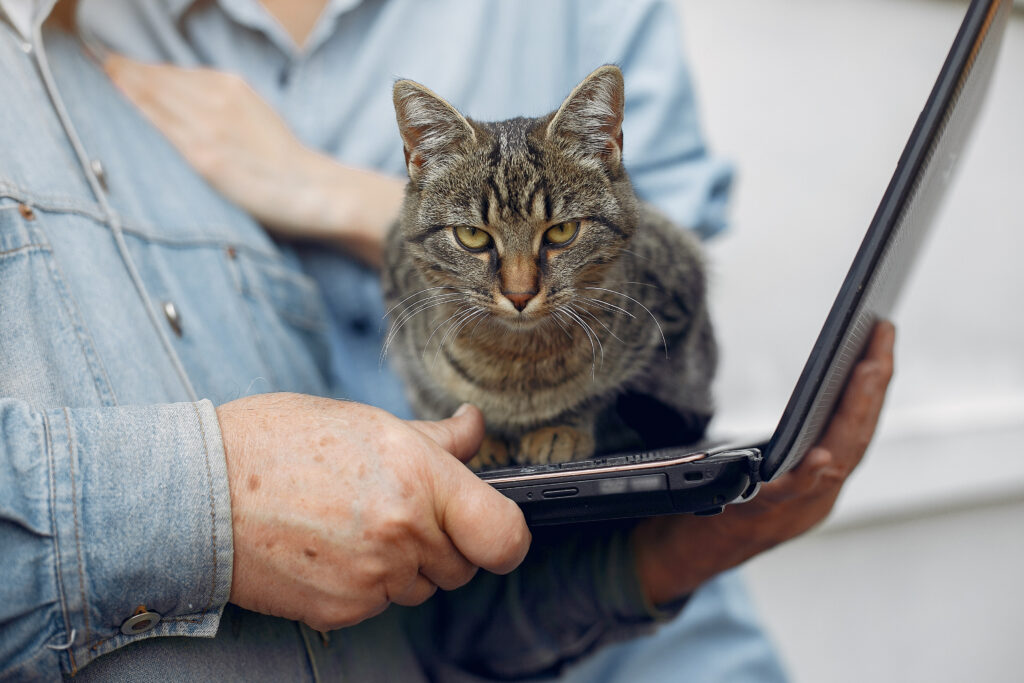
Introduction
Welcome to our blog, “Decoding Kitty Language.” If you’ve ever wondered what your feline friend is trying to tell you, you’re not alone. Cats have a complex and nuanced way of communicating through their behaviour and vocalisations. In this blog, we’ll explore the fascinating world of cat behaviour, unravel the mysteries of their language, and help you better understand your cat’s thoughts and feelings. Get ready to foster a deeper connection with your furry companion.
While cats may not speak our language, they have an extensive vocabulary of their own. Understanding this feline lexicon is the key to building a deeper connection with your pet, resolving behavioural issues, and ensuring their well-being. So, grab a cup of tea, settle in with your cat (if they’re in the mood), and let’s embark on a journey to decipher the language of your furry friend. By the end of this post, you’ll be well on your way to becoming a fluent speaker of “Kitty.”
Body Language to Understand Cat Behaviour
Observing your cat’s body language is crucial for understanding their emotions, needs, and intentions. Cats are renowned for their subtlety and complexity when it comes to communication, and their body language is one of the primary ways they express themselves. Here’s the significance of observing various aspects of your cat’s body language.
Understand different tail positions for cats like upright tail, puffed tail, tucked tail and tail twitching. Also create understanding for different ear movements. There are different types of ear movements in cats like forward ears, sideways or flat ears and backward ears.
Observing tail positions and ear movements, along with other body language cues, allows you to respond appropriately to your cat’s emotions and needs. It can help you avoid situations that may lead to stress or aggression and provide the right kind of attention or space when required.
It’s essential to keep in mind that while these general guidelines provide insights into your cat’s emotions, individual variations and context matter. Every cat is unique, and their body language may vary depending on their personality and past experiences. Consistently observing your cat’s body language and paying attention to the context will enable you to build a stronger and more harmonious relationship with your feline companion.
Cat Purring: A Universal language of cat contentment
The science of purring is a fascinating and often mystifying subject in the world of feline communication. While it’s commonly associated with contentment and relaxation, purring serves a multifaceted role in the lives of cats and their interaction with humans. Here’s a brief insight into the science of purring and its role in cat communication
The role of purring in cat communication is the sign of contentment and comfort, healing and stress reduction, communication with humans, self-calming, bonding. It’s important to note that while purring is often associated with happiness, it can also occur in less positive situations. Some cats may purr when in pain, anxious, or unwell, suggesting that it can serve as a coping mechanism during difficult times.
Understanding the context in which your cat purrs is crucial for responding to their needs appropriately. It’s a significant part of a cat’s communication toolkit, and by paying attention to when and why your cat purrs, you can better understand and respond to their emotional and physical well-being.
Cat Sounds as a viable form of Cat Communication
Understanding the various sounds cats make, from meows to purrs to hisses, can provide valuable insights into their communication and emotional state. Cats are renowned for their diverse vocalisations, each with its own unique meaning and purpose. Different cat meows like standard meow, chatter meow, pleading meow, howling meow provide decent form of communication for their humans.
Cats also do certain hissing sounds like defensive hissing, aggressive hissing, protective hissing. Hissing is a warning sound. Cats hiss when they feel threatened, cornered, or confronted by something they perceive as a danger.It’s a way to signal that they are ready to defend themselves if necessary.
Understanding these vocalisations is essential for interpreting your cat’s needs and emotions. While these general guidelines provide insights, it’s crucial to consider the context and the individual personality of your cat. Some cats are more vocal than others, and their unique sounds may vary. By paying attention to the specific sounds your cat makes and the accompanying body language, you can respond appropriately and provide for their physical and emotional well-being.
Conclusion
Cats communicate through a variety of vocalisations, body language, and behaviours. Each of these has a distinct purpose, from expressing contentment to signalling distress or fear. Purring isn’t just a sign of happiness. Cats may purr for self-soothing, bonding, or even during distress. Understanding the context is essential for interpreting the meaning of a purr. Recognizing and understanding cat behaviour is crucial for addressing common issues like litter box problems, scratching, aggression, and excessive vocalisation. Resolving these problems often requires identifying the underlying cause. Responding to your cat’s language with empathy and care strengthens your bond.
By interpreting your cat’s cues correctly, you can ensure their physical and emotional well-being. This includes addressing their needs for food, comfort, and mental stimulation. Responding to your cat’s language fosters a stronger bond built on trust and mutual understanding. It shows your cat that you respect and care for their feelings and needs. Learning cat behaviour is a key step in addressing and resolving behavioural problems. By identifying the root causes, you can create a harmonious environment for your cat. Understanding your cat’s language enhances their quality of life. It reduces stress, fosters a sense of security, and helps your cat lead a happier and more fulfilling life.
In conclusion, your cat’s language is a multifaceted, nuanced form of communication that’s crucial for your cat’s well-being and your relationship with them. By paying attention to their vocalisations, body language, and behaviours, and by responding with care and empathy, you can create a more enriching and harmonious life for both you and your feline companion.
